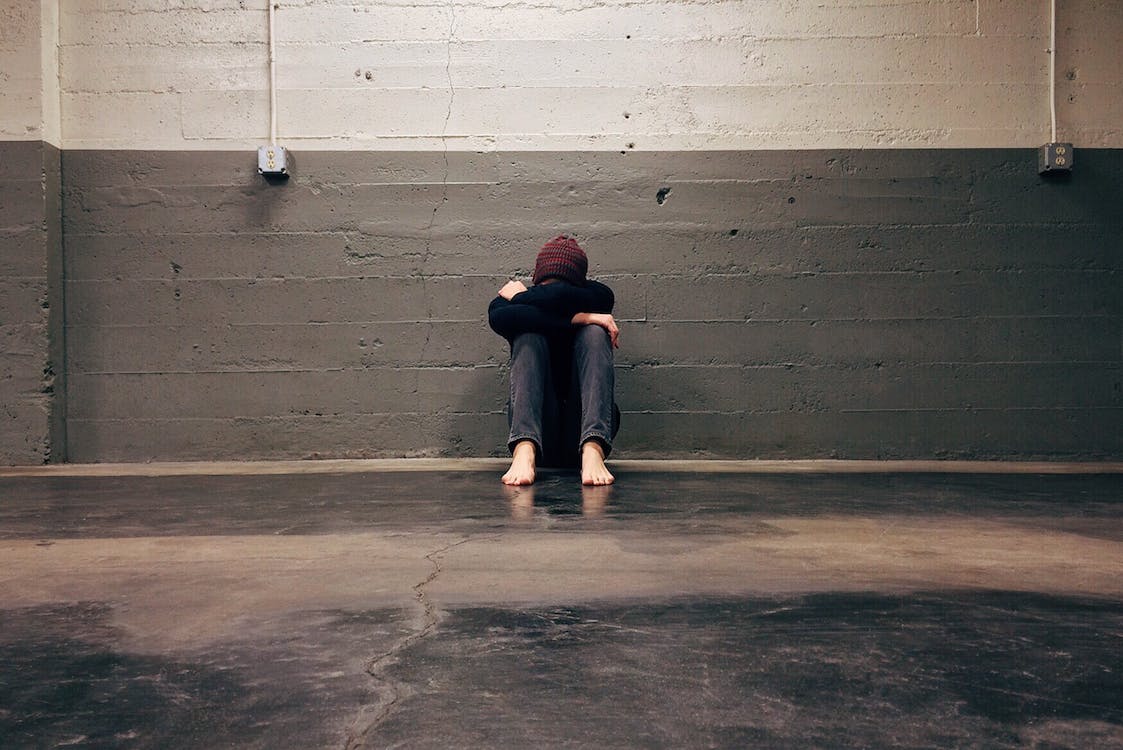
Being charged with a sex offence is sensitive, personal, uncomfortable, and damaging.
According to 2020-21 statistics by the Australian Institute of Health and Welfare, there was an estimation that 2.2 million Australians experienced sexual violence, whether this was recurring, an attempt, or a threat, since the age of 15. 13% of all people had experienced sexual violence by a male, and 1.8% had experienced sexual violence by a female.
The legal framework with sexual assault charges can be complex–and the court process itself traumatic–so it is important to have an experienced legal representative at your corner that you trust.
This article will explore in detail criminal charges, common assault, consent laws, and how a sexual assault lawyer can support you when going to court.
The consequences of the finding of guilt can include sex offender registration, lengthy imprisonment, and compensation claims brought by the victim. If you need a strong defence strategy, there are many key options and legal strategies to consider. A reputable, knowledgeable, dedicated criminal lawyer can help.
Sex offences can include unwanted sexual behaviour, rape, incest, or child abuse, such as unwanted kissing or touching.
Under the the Crimes Act 1958 (Vic), a major factor in determining whether a sexual act is an offence is whether the other party gave consent or the other party was aware and approved of the act at all times.
This act covers various acts that constitute a sexual offence in Victoria, such as sex without consent, improper touching, or indecent display.
Consent means free and voluntary agreement, and navigating this determines the nature of the sexual assault charge. According to Section 36 of the Crimes Act 1958 (Vic) (‘Crimes Act‘), consent reflects the affirmative consent model, requiring a person to determine if there is consent.
In this case, a person does not consent to an act just by resisting verbally or physically or consenting because they agreed to a different sexual act with the same person.
According to Section 36AA, a person does not consent when they do not say or do anything that consents to the act, the person submits to the act due to force, harm, or fear, whether it is a single incident or ongoing pattern, the person is unconscious or asleep, the person submits due to being unlawfully detained, the person is so affected by alcohol they can’t consent to the act, the condom is tampered with, or the person is incapable of understanding the nature of the act.

As per Victorian legislation, various sex offences are prohibited with varying penalties, but what do they include?
As one of the most common issues handled in Australia, sexual assault offences range from fines to imprisonment terms. There are two offences of sexual assault under Sections 40 and 41 of the Crimes Act: sexual assault and sexual assault by compelling touching.
This includes all actions where the accused person sexually touches the complainant or on a sensitive part of their body without consent.
If the other person never consented to the current act, even if consent was previously given, the accused is still guilty. Section 40 of the Crimes Act states a level 5 imprisonment term (10 years) for guilty offenders.
Likewise, if an accused person compels another to commit the sexual asault, they are still guilty.
A sexual offence is an aggravating circumstance if a victim is assaulted in the process. This includes if the accused person used force or threat that the other party did not consent to, even if the victim was not aware that force was used.
Force can be direct, indirect, or on clothing, the body, or equipment.
Suppose an accused threatens to carry out a sexual offence. In that case, it is an offence to make a physical or verbal statement to rape, sexually harass, indecently touch, allow another party to assault, or make a statement to the complainant. A maximum of 5 years imprisonment can be imposed on a guilty person.
According to Section 52A of the Crimes Act 1958 (Vic), cognitive impairment includes impairment due to mental illness, intellectual disability, dementia, or brain injury.
Section 4 of the Mental Health Act 2014 (Vic) states that a mental illness is a medical condition characterised by a significant disturbance of thought, mood, memory, or perception, and this can affect how an accused can be charged.
Offences include sexual penetration according to Section 52B of the Crimes Act, sexual touching under Section 52C, sexual activity in front of a person under Section 52D, and under Section 52E, an offence for a worker to cause a person with cognitive impairment or mental illness to be present when engaging in a sexual act with another person.
All of this must be contrary to community standards of acceptable conduct, and this depends on the purpose of the sexual activity and whether the worker caused sexual gratification by engaging in this activity. It does not matter if the person with mental illness or cognitive impairment consents.
These crimes are punishable by up to 5 years imprisonment.
Whether it be an emotional, physical, or psychological threat, or whatever makes the victim feel afraid, it is an offence to get a person to engage in a sexual act through fear or threats.
Under Section 44 of the Crimes Act, procuring a sexual act through threats carries a maximum of ten years imprisonment.
If a person tampers with cognitive abilities for sexual purposes, this is an offence under Section 46 of the Crimes Act.
Administering an intoxicating substance or causing another person to administer it for sexual purposes is an offence, with up to 10 years imprisonment.
Consent from an intoxicated person is not valid in court.
The Justice Legislation Amendment (Sexual Offences and Other Matters) Act 2022 (Vic) amendments relocate image-based sexual offences from the Summary Offences Act (1966) (Vic) to the Crimes Act, making them indictable – serious – offences.
Detaining a person for sexual purposes, regardless of marital status, is an offence under Section 47 of the Crimes Act.
This includes taking another person away or detaining them without their consent or will. The crime is punishable by up to 10 years imprisonment.
Interested in learning about types of drug offences in Victoria? Have a read of what types of drug charges are most common and how a criminal lawyer can help!
Under the Crimes Act Section 53B, a person commits the offence of sexual servitude if they cause someone to provide or continue to provide commercial sexual services, such as sexual intercourse.
This includes doing this by using force, threats, unlawful detention, fraud, excessive debt, or if they know or are reckless as to whether this person is free to stop providing these commercial sexual services.
Under the Crimes Act Section 53D, a person commits the offence of sexual servitude if they conduct a business that provides sexual services, and the person providing these sexual services is not free to stop providing these services due to force, threats, fraud, unlawful detention, and debt.
Under the Crimes Act, there are two age categories where sexual activity with a child person under the age of 18 is unlawful: a child aged 16 to 17 years and a child aged under 16 years. Children cannot consent to any sexual act under the law.
Where these circumstances include a child under 16; a court can issue up to 25 years’ imprisonment depending on the offence.
Are you looking for professional advice on sex offence charges? At May Lawyers, we service you as a criminal offence lawyer near Windsor, Richmond, and Fairfield areas.
As stated in previous sections, sexual assault, sexual penetration, sexual activity in the presence of a child, and encouraging sexual activity are offences, and this is described in Sections 49A, 49B, 49D, 49F, 49H, and 49K. These offences are punishable by up to 10 years imprisonment.
Suppose a person has previously been found guilty of a sexual offence. According to Section 49N, it is also an offence to loiter at or near a school, children’s service centre, education and care premises, or public places that children frequently visit. The maximum penalty is up to 5 years imprisonment.
A relevant offence includes murder, a sexual offence, or an offence against the Sex Work Act 1994 (Vic), but an exception to this offence is a reasonable excuse stated in Section 49ZB in the Crimes Act.
If a person in an organisation has the power to remove a risk that a child under 16 will become a victim, it is an offence, according to Section 49O.
This includes neglecting or failing to remove the risk and if the sexual offence is committed by a person over 18 who is equally associated with the relevant organisation. Organisations can include religious bodies, schools, hospitals, and out-of-home care services and are punishable by up to 5 years imprisonment.
Victoria, in 2016, changed the term to child abuse material to reflect the true nature of this material and its harms. ‘Material’ is any audio, film, image, printed material, photography, text, computer game, or electronic material. This image can be still or pre-recorded, and distributing the material can be published, communicated, sent, supplied, transmitted, or made available for access by another person.
Exceptions to these offences are listed in Sections 51J and 51T, and these only apply if the person involved was over 18 years old at the time of production, the material possesses artistic merit, or the material is of public benefit, for example, genuine medical, legal, scientific, and educational purposes.
Professionals have a legal obligation to report or disclose sexual offences against young people to the authorities. For information regarding mandatory reporting and disclosure, visit this Chapter.
If you would like to learn more about charges relevant to your case, here is a guide to types of assault and violence charges.
Misrepresenting an entity or profile to engage in a sexual act or bodily harm is an offence. This includes adopting a misleading disguise or profile to trick a victim into engaging in a sexual act.
In Section 45 of the Crimes Act, this offence results in a maximum penalty of up to 5 years imprisonment. If you want more information, you can read this chapter on The Children’s Court, which details important terms.
Requiring advice on sex-related allegations? At May Lawyers, trust is in your corner. We can always assist you as a criminal lawyer near Sunshine, Heidelberg, and Dallas.
At May Lawyers, we understand how many cases can take an emotional toll, especially when dealing with the landscape of sexual assault charges. It is important to have someone you can trust.
As an Accredited Law Specialist, drug offence lawyer and traffic offence lawyer, I am one of the few recognised by the Law Institute of Victoria, offering support and services for assault and violence cases, confiscation, theft, fraud, and robbery.
Working closely with all clients as if they are my own, you have many legal options. With experience in major criminal trials, saving you the cost of a barrister, and available 24/7 if you’ve been arrested, you can expect a compassionate and professional approach.
Contact us today for no-obligation, free legal advice. You don’t need to worry about the outcome.